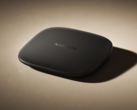The Xiaomi QLED TV FX Pro Series 2025 has been officially announced. Specifically, these new TVs will become available on May 14th for prices starting around $300. At the time of writing, Xiaomi has only confirmed a launch in India. It remains to be seen if and when the television will launch in other markets, but many of the brand’s other TVs did make it to the European market.
That being said, the new Xiaomi TV will be available in 43 and 55 inches, and unsurprisingly, it will sport the usual 4K resolution of 3840 x 2160 pixels and a refresh rate of 60Hz. However, the Game Booster feature can increase the refresh rate of the 55-inch version to 120Hz.
In order to do so, Xiaomi utilizes the DLG (Dual Line Gate) technology, which prioritizes refresh rate over the resolution and will probably turn the QLED TV down to 1080p at 120Hz. This means that external devices who can output 4K at over 60Hz are not a good fit for this new television. It should also be noted that most other 4K TVs in this low price range, such as the TCL Q65 (from $318 on Amazon), only run at a native 60Hz. The Xiaomi QLED TV FX Pro Series 2025 does support MEMC and offers a so-called "Filmmaker Mode".
Xiaomi also uses a QLED panel and does not rely on the OLED or mini-LED technology in this case. As a result, buyers shouldn’t expect an extremely high contrast ratio or peak brightness, although HDR10+ is officially supported and the manufacturer claims that the DCI-P3 color space is covered by 94%. Moreover, the integrated speakers have an output power of up to 34 watts on the 55-inch Xiaomi QLED TV. Dolby Audio, DTS X and DTS Virtual:X are supported as well.
These new QLED sets also come with an integrated Fire TV, which provides access to many streaming apps. The QLED TV FX Pro 2025 also supports Apple AirPlay 2, Miracast and offers three HDMI ports, including one with eARC support. A USB 2.0 and Ethernet port are available too. Alternatively, the Xiaomi television can be connected via dual-band WiFi or Bluetooth. Last but not least, Alexa-compatible security cameras can be monitored via a convenient picture-in-picture feature.

























